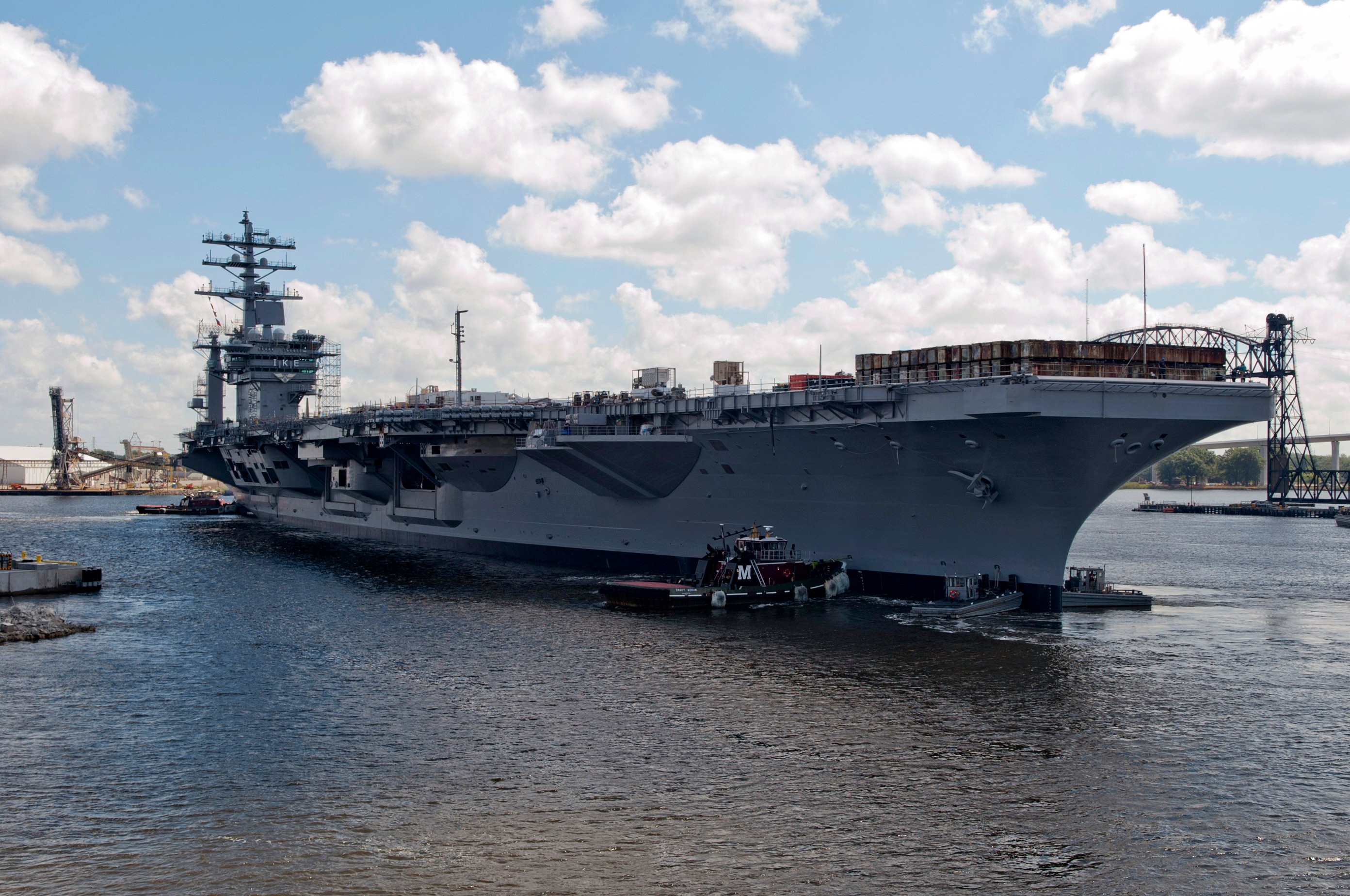
The U.S. Navy is swapping the order of planned deployments for carriers USS Harry S. Truman (CVN-75) and USS Dwight D. Eisenhower (CVN-69), U.S. Fleet Forces officials told USNI News on Monday.
Eisenhower was scheduled to deploy in late 2015 but instead the service will send Truman and deploy the Eisenhower in late 2016, Fleet Forces spokeswoman Lt. Cmdr. Cate Cook told USNI News.
The swap was the best setup the Navy had, “to provide ready forces for national tasking,” Cook said.
Part of the reason for the swap is the extension of the Eisenhower’s current maintenance period, currently underway at the Norfolk Naval Shipyard, Va.
The initial docking planned incremental availability (DPIA) was extended following Eisenhower’s entrance into the Norfolk dry dock in September of last year.
“The original availability was planned for 14 months (September 2013 to November 2014) and is currently tracking to be complete in February 2015,” according to a statement from the shipyard.
“The maintenance package has grown by more than 30 percent as a number of ship systems – such as the shafts, rudders and distilling units – have been inspected and shown to require more maintenance than had been anticipated.”
Navy officials said the ongoing pause in nuclear work at the shipyard did not factor into the decision to swap the deployments.
Truman deployed late last year following a budget dust up that temporarily delayed sending the ship to the Eastern Mediterranean and the Middle East to preserve operational funding.
Also, because of the 2013 budget churn, Eisenhower and its carrier strike group (CSG) went out on almost back-to-back deployments with a mere two-month break.
Eisenhower last deployed in February of 2013 and returned August the same year before entering its DIPA in September.
Truman returned from its most recent deployment in April and is slated for a short maintenance availability ahead of heading back to sea in 2015.
Aside from the carrier change, the staff from CSG 10 — which previously deployed on Truman — will now deploy with Eisenhower in 2016. The staff of CSG 8 will deploy with Truman.
Other than the CSG staff swap, “this schedule change does not affect any other ship, squadron or staff schedules,” according to Fleet Forces.
The Truman deployment was to be the first for Fleet Forces Optimized Fleet Response Plan (O-FRP) that would extend carrier strike group (CSG) cycles from 32 to 36 months centered on an eight-month CSG deployment.
Now Eisenhower will be the first to implement the new deployment plan.
The following is the complete Oct. 6, 2014 statement from Fleet Forces:
NORFOLK, Va. – Commander, U.S. Fleet Forces (USFF) announced today a decision to change the future schedules of two Norfolk-based aircraft carriers.
USS Harry S. Truman (CVN-75), will replace USS Dwight D. Eisenhower (CVN-69) in upcoming training, operational, and maintenance schedules. Eisenhower, in turn, will shift into the training, operational, and maintenance schedule that had been planned for Truman. The commanding officers of the two ships notified the crews earlier today.
As USFF implements the Optimized Fleet Response Plan (O-FRP), a careful analysis of fleet maintenance, training and operational schedules determined that changing Truman and Eisenhower’s long-term schedules would better enable the Navy to provide ready forces for national security taskings.
O-FRP offers more stability and predictability for Sailors and families by aligning carrier strike group assets to a 36-month training and deployment cycle. While changing Truman and Eisenhower’s schedules impacts the ships’ Sailors and families, the change ultimately provides better predictability Navy-wide.
As part of this change, Carrier Strike Group (CSG) 10 staff members, who previously embarked aboard Truman, will now embark aboard Eisenhower. Conversely, CSG 8 staff members, who previously embarked aboard Eisenhower, will now embark aboard Truman. This schedule change does not affect any other ship, squadron, or staff schedules.





